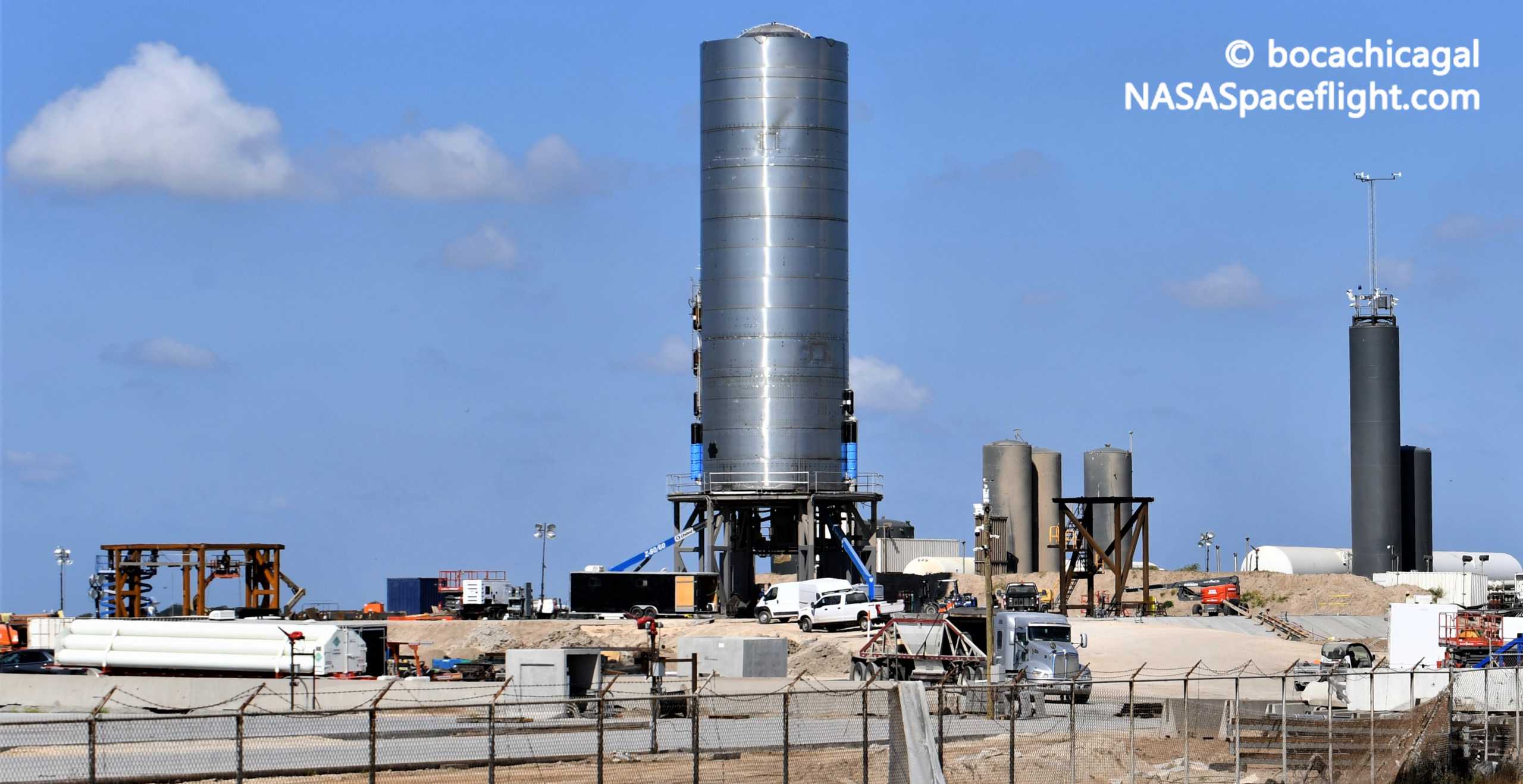

News
SpaceX Starship test plans solidify after bad weather delays hop
Around the same time SpaceX was preparing for its 100th Falcon rocket launch, bad Texas weather forced the company to abort its second Starship hop test of the month.
Since that abort, SpaceX’s near-term Starship test plans have begun to solidify, offering a clearer picture of what to expect over the next week or two. Pending better weather at its Boca Chica, Texas test facilities, Starship serial number 6 (SN6) is still first in line and has been preparing for its hop debut ever since the prototype completed a Raptor engine static fire test on August 23rd.
Measuring approximately 30m (~100 ft) tall, SN6 is a full-scale Starship tank and engine section – the bottom ~60% and business end of the reusable orbital spacecraft. Of course, SpaceX has a ways to go before Starship is actually ready for its first orbital test flight, let alone reuse after such a test flight, but the company did take its biggest step yet towards that lofty ambitions with Starship SN5’s successful August 4th hop debut.
Effectively twins, Starship SN5 and SN6 have since been expected to take turns completing “several” hops to improve SpaceX’s familiarity with Starship launch operations and work towards a smooth procedure that can be completed multiple times per day. With SN6 now scheduled to hop no earlier than 8am CDT (UTC-5), September 3rd, 29 days after SN5’s debut, SpaceX still has its work cut out for it.
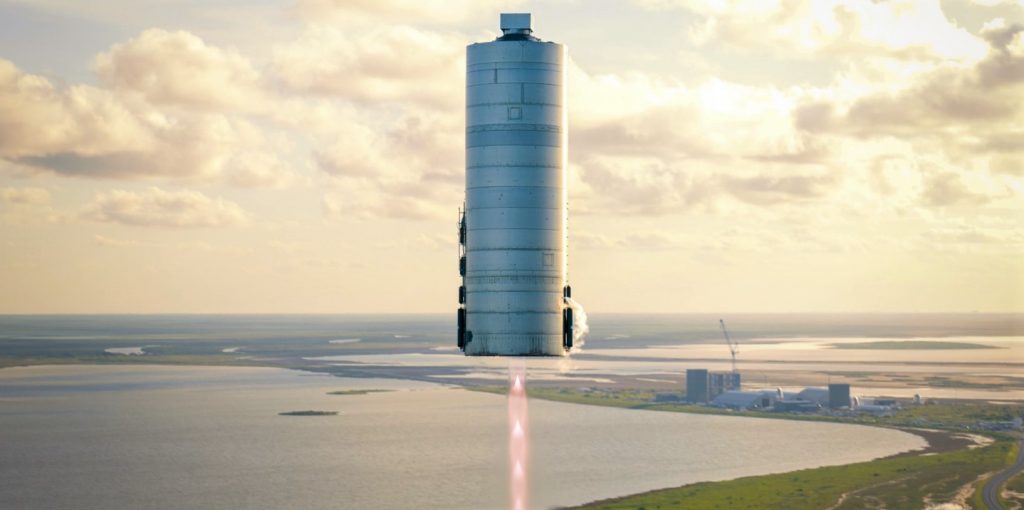
Nevertheless, SN5’s 150m (~500 ft) hop was the first flight of any kind for a full-scale Starship prototype, as well as the first use of an entirely new landing leg design and Raptor’s first flight in almost a year. In the history of rocket development, there is no precedent for launching and landing a prototype rocket and then repeating the same test with an entirely new prototype less than a month later.
Additionally, most of the 29 days since SN5’s first hop have been spent preparing Starship SN6 for a crucial “cryo proof” qualification test. Had that cryo proof been completed before SN5’s hop debut, SN6 could have been ready to fly as few as ~10 days later. That still leaves SpaceX a long ways away from multiple Starship hops per day but does offer encouragement that flight-proven Starship SN5 could be ready for its second hop not long after the pad is clear.
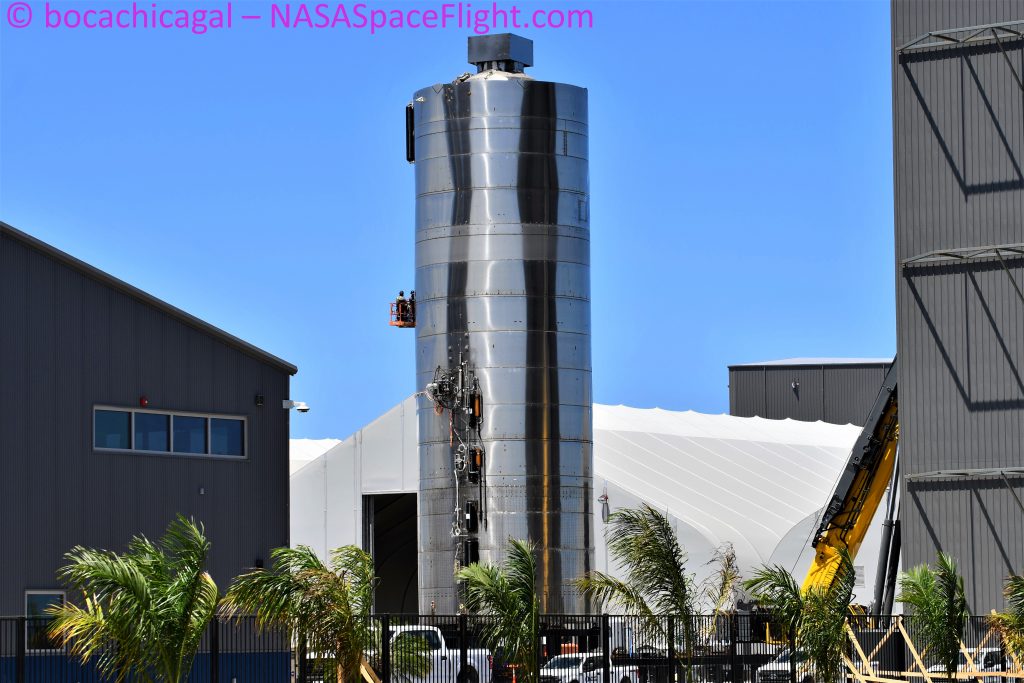
However, it appears that SpaceX instead plans to follow up SN6’s hop debut with a new ‘test tank’ meant to demonstrate an upgraded Starship “thrust puck” built out of a different steel alloy. Known as Starship SN7.1, the test will follow on the heels of a more traditional tank (SN7) that completed a record-breaking pressure test in June 2020 and proved that Starship would likely be better off with a different steel alloy.
While SN7 was a basic test tank (two domes and a few steel rings), SN7.1 adds a skirt section at its base and replaces the aft dome with a thrust dome. Likely built entirely out of a steel alloy closer to 304L than the 301 SpaceX has used for all prior Starship prototypes, that thrust dome features a new ‘thrust puck’ – the structural element Raptor engines attach to and transmit their thrust through.
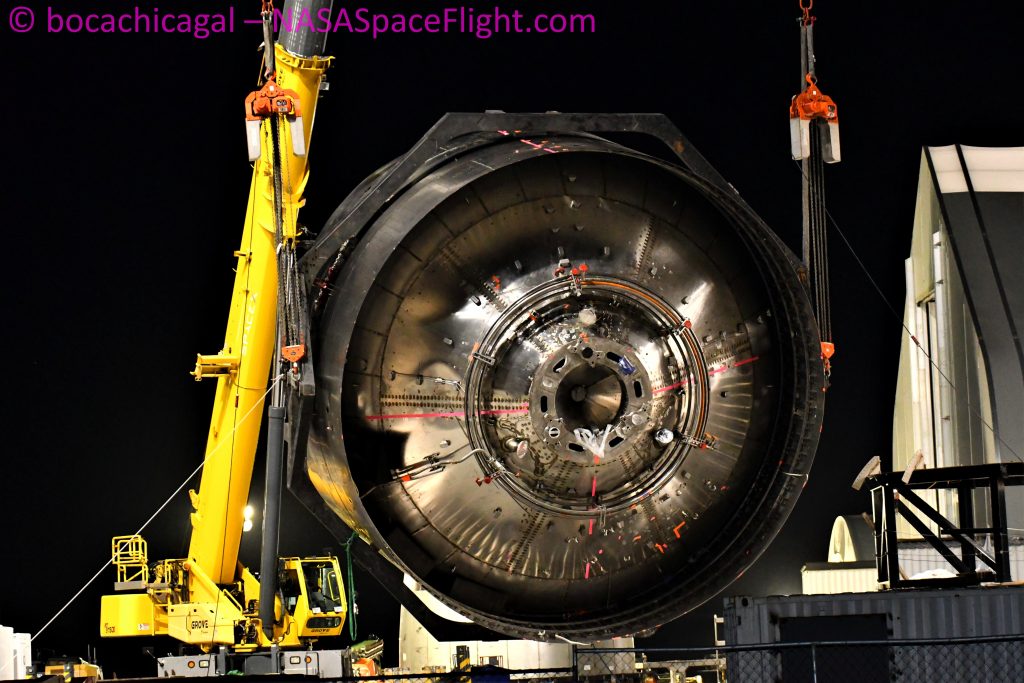
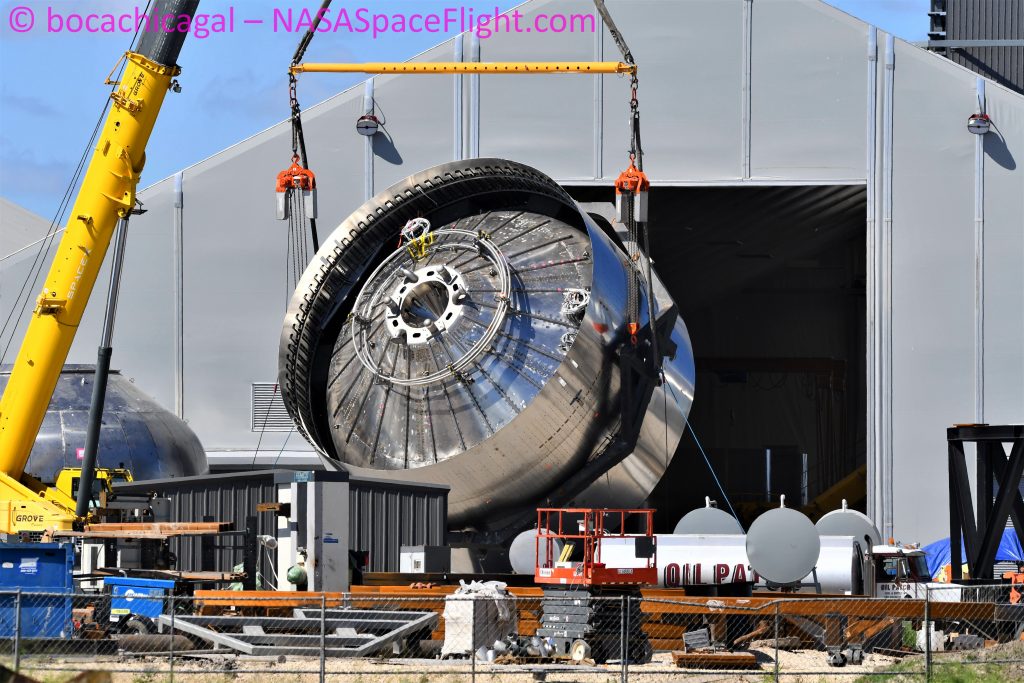
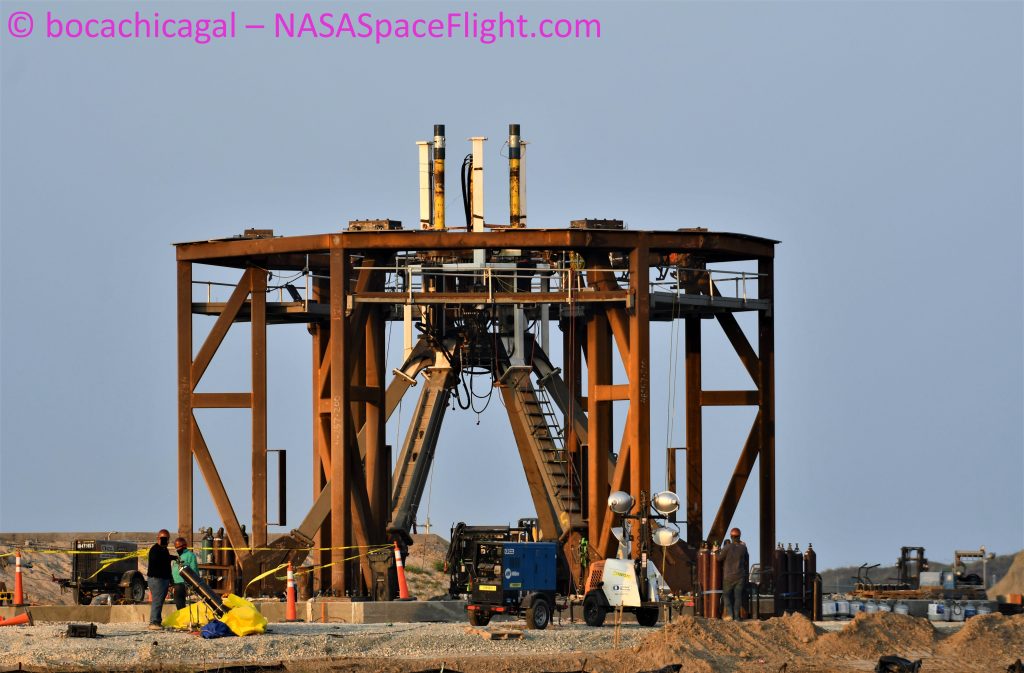
Unlike past single tank tests, SN7.1 will be put through something more like a full prototype’s cryo pressure test. SN7.1 will be installed on a launch mount, allowing its skirt clamps to firmly secure the prototype to the stand, itself secured to a concrete slab on the ground. That launch mount also allows SpaceX to install a hydraulic ram designed to mechanically simulate the thrust of 1-3 Raptor engines without the risk involved in an actual static fire. SN7.1 is scheduled to begin testing no earlier than (NET) 8 am CDT (UTC-5), September 6th – just three days after SN6’s next planned hop attempt.
Check out Teslarati’s Marketplace! We offer Tesla accessories, including for the Tesla Cybertruck and Tesla Model 3.
News
Tesla begins Robotaxi certification push in Arizona: report
Tesla seems serious about expanding its Robotaxi service to several states in the coming months.

Tesla has initiated discussions with Arizona transportation regulators to certify its driverless Robotaxi service in the state, as per a recent report from Bloomberg News. The move follows Tesla’s launch of its Robotaxi pilot program in Austin, Texas, as well as CEO Elon Musk’s recent comments about the service’s expansion in the Bay Area.
The Arizona Department of Transportation confirmed to Bloomberg that Tesla has reached out to begin the certification process for autonomous ride-sharing operations in the state. While details remain limited, the outreach suggests that Tesla is serious about expanding its driverless Robotaxi service to several territories in the coming months.
The Arizona development comes as Tesla prepares to expand its service area in Austin this weekend, as per CEO Elon Musk in a post on X. Musk also stated that Tesla is targeting the San Francisco Bay Area as its next major market, with a potential launch “in a month or two,” pending regulatory approvals.
Tesla first launched its autonomous ride-hailing program on June 22 in Austin with a small fleet of Model Y vehicles, accompanied by a Tesla employee in the passenger seat to monitor safety. While still classified as a test, Musk has said the program will expand to about 1,000 vehicles in the coming months. Tesla will later upgrade its Robotaxi fleet with the Cyercab, a two-seater that is designed without a steering wheel.
Sightings of Cybercab castings around the Giga Texas complex suggests that Tesla may be ramping the initial trial production of the self-driving two-seater. Tesla, for its part, has noted in the past that volume production of the Cybercab is expected to start sometime next year.
In California, Tesla has already applied for a transportation charter-party carrier permit from the state’s Public Utilities Commission. The company is reportedly taking a phased approach to operating in California, with the Robotaxi service starting with pre-arranged rides for employees in vehicles with safety drivers.
News
Tesla sets November 6 date for 2025 Annual Shareholder Meeting
The automaker announced the date on Thursday in a Form 8-K.

Tesla has scheduled its 2025 annual shareholder meeting for November 6, addressing investor concerns that the company was nearing a legal deadline to hold the event.
The automaker announced the date on Thursday in a Form 8-K submitted to the United States Securities and Exchange Commission (SEC). The company also listed a new proposal submission deadline of July 31 for items to be included in the proxy statement.
Tesla’s announcement followed calls from a group of 27 shareholders, including the leaders of large public pension funds, which urged Tesla’s board to formally set the meeting date, as noted in a report from The Wall Street Journal.
The group noted that under Texas law, where Tesla is now incorporated, companies must hold annual meetings within 13 months of the last one if requested by shareholders. Tesla’s previous annual shareholder meeting was held on June 13, 2024, which placed the July 13 deadline in focus.
Tesla originally stated in its 2024 annual report that it would file its proxy statement by the end of April. However, an amended filing on April 30 indicated that the Board of Directors had not yet finalized a meeting date, at least at the time.
The April filing also confirmed that Tesla’s board had formed a special committee to evaluate certain matters related to CEO Elon Musk’s compensation plan. Musk’s CEO performance award remains at the center of a lengthy legal dispute in Delaware, Tesla’s former state of incorporation.
Due to the aftermath of Musk’s legal dispute about his compensation plan in Delaware, he has not been paid for his work at Tesla for several years. Musk, for his part, has noted that he is more concerned about his voting stake in Tesla than his actual salary.
At last year’s annual meeting, TSLA shareholders voted to reapprove Elon Musk’s compensation plan and ratified Tesla’s decision to relocate its legal domicile from Delaware to Texas.
Elon Musk
Grok coming to Tesla vehicles next week “at the latest:” Elon Musk
Grok’s rollout to Tesla vehicles is expected to begin next week at the latest.

Elon Musk announced on Thursday that Grok, the large language model developed by his startup xAI, will soon be available in Tesla vehicles. Grok’s rollout to Tesla vehicles is expected to begin next week at the latest, further deepening the ties between the two Elon Musk-led companies.
Tesla–xAI synergy
Musk confirmed the news on X shortly after livestreaming the release of Grok 4, xAI’s latest large language model. “Grok is coming to Tesla vehicles very soon. Next week at the latest,” Musk wrote in a post on social media platform X.
During the livestream, Musk and several members of the xAI team highlighted several upgrades to Grok 4’s voice capabilities and performance metrics, positioning the LLM as competitive with top-tier models from OpenAI and Google.
The in-vehicle integration of Grok marks a new chapter in Tesla’s AI development. While Tesla has long relied on in-house systems for autonomous driving and energy optimization, Grok’s integration would introduce conversational AI directly into its vehicles’ user experience. This integration could potentially improve customer interaction inside Tesla vehicles.
xAI and Tesla’s collaborative footprint
Grok’s upcoming rollout to Tesla vehicles adds to a growing business relationship between Tesla and xAI. Earlier this year, Tesla disclosed that it generated $198.3 million in revenue from commercial, consulting, and support agreements with xAI, as noted in a report from Bloomberg News. A large portion of that amount, however, came from the sale of Megapack energy storage systems to the artificial intelligence startup.
In July 2023, Musk polled X users about whether Tesla should invest $5 billion in xAI. While no formal investment has been made so far, 68% of poll participants voted yes, and Musk has since stated that the idea would be discussed with Tesla’s board.
-

 Elon Musk1 week ago
Elon Musk1 week agoTesla investors will be shocked by Jim Cramer’s latest assessment
-

 Elon Musk3 days ago
Elon Musk3 days agoElon Musk confirms Grok 4 launch on July 9 with livestream event
-

 Elon Musk16 hours ago
Elon Musk16 hours agoxAI launches Grok 4 with new $300/month SuperGrok Heavy subscription
-

 News7 days ago
News7 days agoTesla Model 3 ranks as the safest new car in Europe for 2025, per Euro NCAP tests
-

 Elon Musk2 weeks ago
Elon Musk2 weeks agoA Tesla just delivered itself to a customer autonomously, Elon Musk confirms
-

 Elon Musk1 week ago
Elon Musk1 week agoxAI’s Memphis data center receives air permit despite community criticism
-

 Elon Musk2 weeks ago
Elon Musk2 weeks agoTesla’s Omead Afshar, known as Elon Musk’s right-hand man, leaves company: reports
-

 News2 weeks ago
News2 weeks agoXiaomi CEO congratulates Tesla on first FSD delivery: “We have to continue learning!”

















